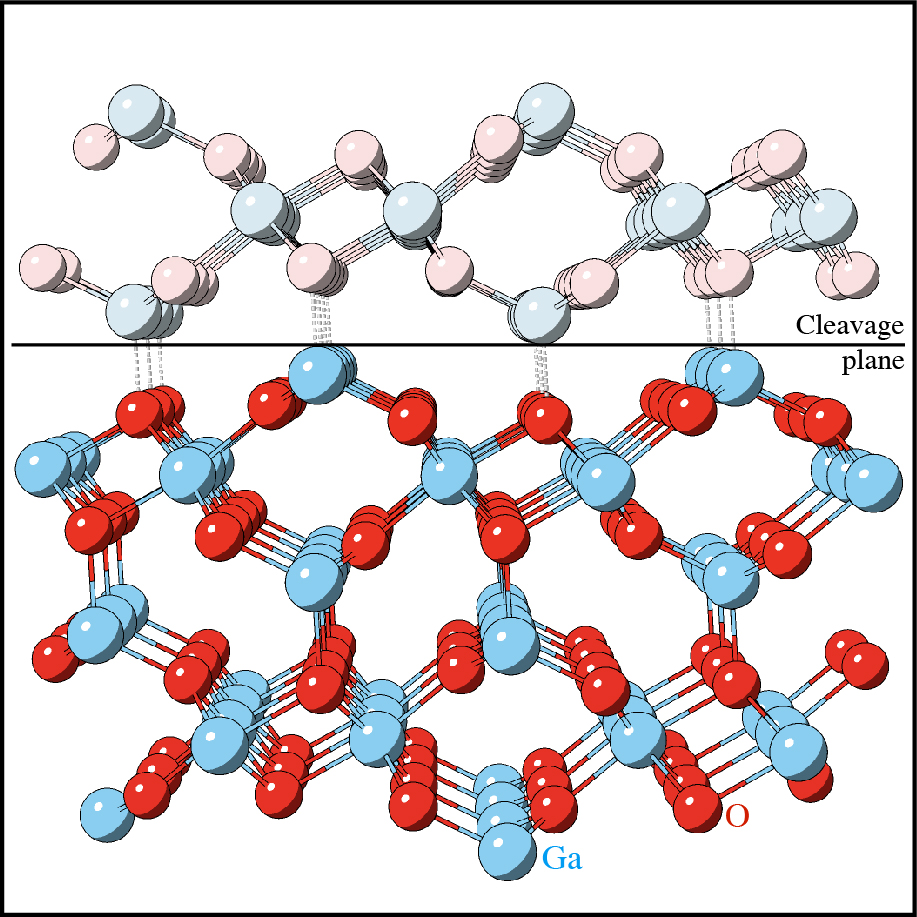Computational Synthesis of Substrates by Crystal Cleavage
Joshua T. Paul, Alice Galdi, and Richard G. Hennig
The synthesis of novel materials for applications ranging from optoelectronic to quantum to beam science often relies on the availability of suitable substrates. To date, most substrates are identified through experimental trial and error. In our work, we explore an alternative approach that relies on the screening of materials databases. Motivated by the experimental observation that Ga2O3 shown in the figure below can be easily cleaved into an atomically smooth semiconductor surface, we developed a computational algorithm that identifies materials that can be cleaved into atomically smooth substrates. The algorithm searches for crystallographic planes with few bonds per area.
Searching over 100,000 possible materials, we identify 3,897 unique cleaved surfaces across 1,847 compounds. Comparing the energetic stability of these new substrate surfaces with currently used substrates leads to 2,924 stable substrates, which significantly expands the opportunities of substrate growth. To illustrate the efficacy of our methods, we search for substrates that are suitable for the difficult to grow cubic perovskite, BaSnO3. Among our almost 3000 potential substrates, we identify 46 candidates for the thin-film growth of this ideal solar cell material.
Applications and relation to CBB Goals:
The identified cleavable materials provide the starting point for the search of atomically smooth photocathode materials and also provide the substrates for the growth of thin-film photocathodes with minimal surface roughness.

